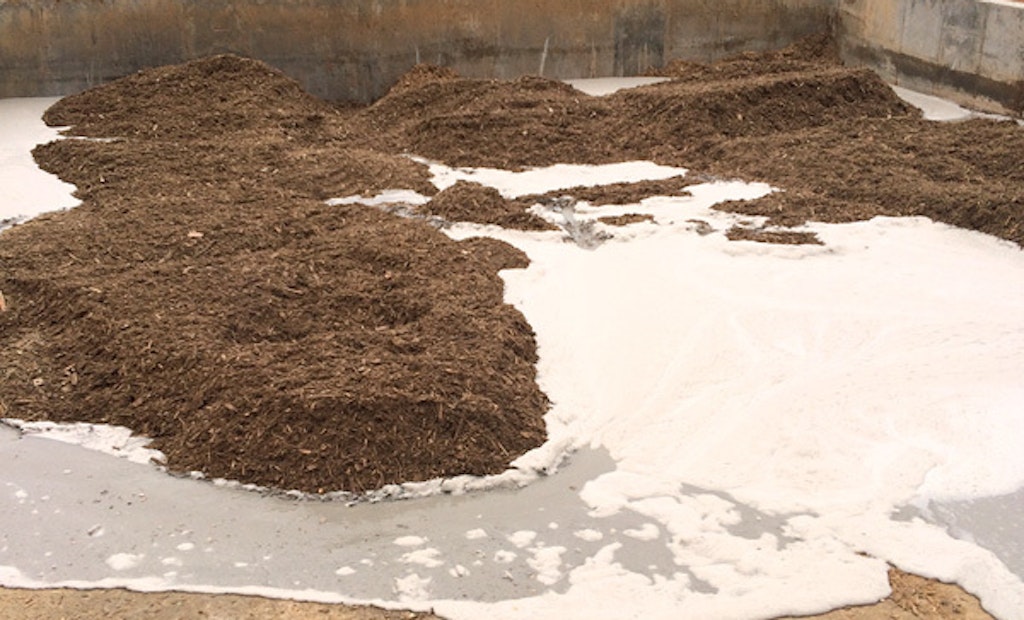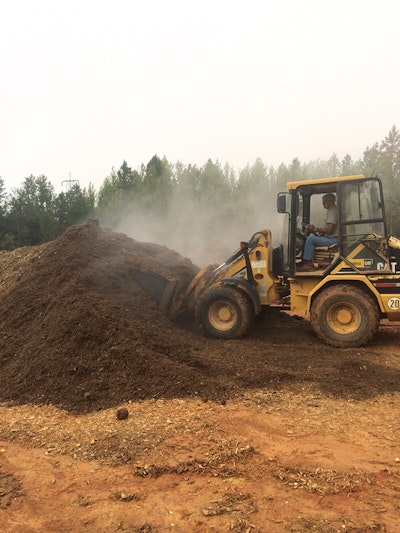
Interested in Portable Sanitation?
Get Portable Sanitation articles, news and videos right in your inbox! Sign up now.
Portable Sanitation + Get AlertsIn 2010, Jason Gibson began thinking there may be a business opportunity in grease. He was already operating a successful portable sanitation company that had grown from one unit to 400 in about five years. His business, 64 Portables just outside of Lexington, North Carolina, was suffering a bit from a slowdown in the construction industry and was looking for new ways to diversify.
He had added septic and grease pumping to his portable restroom business and began studying grease recycling. Two years ago, he settled on his grease plan — composting it for soil enhancement in agriculture, landscaping and gardening. He purchased 70 acres of land less than a mile from his business and began what turned into a long engineering and permitting process.
Pumper: Does grease still have the potential you envisioned in 2010?
Gibson: I sure hope so now, after all this work. I think grease is a big growth opportunity. I don’t know if it’s in composting, dewatering, but I think grease is the big thing.
Pumper: You chose composting. How does it work?
Gibson: We’re taking the grease, mixing it with wood chips, and putting it into windrows to compost. We have our own grease pumping company and are charging three other pumpers to accept their grease, about 10,000 gallons a week. We’re trying to start out really slow with this.
The trucks come in and dump the grease into a 30-foot by 60-foot concrete pit that will hold about 8,000 gallons. We have a Caterpillar 906 loader with a 2-yard bucket and put in some wood chips, mix it up until it’s dry, and put it into windrows about 115 feet long. We get the wood chips from a friend of mine who runs Todco, a wood recycling and mulch company in Lexington.
There’s more labor than I thought there would be. It has to be turned about every three days and we check the temperature every morning with a 6-foot thermometer. If it’s not turned right, you’re not going to make compost, you’re going to make a landfill product. You have to mix the right wood chips with whatever grease products you have.
Pumper: Can you explain the challenge further?
Gibson: You need the carbon mix right. Depending on what material you bring in, you might need a wood chip that has a lot of nitrogen or one that has a lot of carbon. I’ve had a chemist working on this for quite a while. It has to sit at 130 degrees F for 30 days. But we’re going to let ours sit for six months and have it tested by the University of North Carolina to make sure it’s ready. Testing takes about five to seven days.
The compost can be used for any number of things from your yard to farms. We’re wholesaling everything to one company right now. I think we’re in really good shape with what we’re doing, I think it’s going to work out well.
Pumper: You started accepting grease last July after a permitting process that took a lot longer than expected. How long?
Gibson: It took us two years and two months. The (North Carolina) Department of Natural Resources is very familiar with it (grease composting) and everything has to be done according to their specifications and standards, and everything has to be engineered.
I wish someone would have told me about engineers and their prices. You really need to make sure when you step into this that you have the money. There was so much I was clueless about. It was a several hundred thousand dollar project with buying the land, the engineering, buying the loader, the concrete pit — that was pretty expensive — and getting everything going. I had a geologist and a soil scientist. I had no idea until I got into it and got too deep to stop or I would have never started.
The engineers finally fought it out. We went from a clay pit to a concrete pit, and then they wanted the whole site concrete. I checked on the cost of that and it was going to be around $400,000, so that obviously wasn’t going to work. We got them back to allowing a clay base (to hold the composting material).
Pumper: What made you even start thinking about grease in 2010?
Gibson: Disposal costs in my area. Obviously there’s grease being made every day and I thought there had to be a better way than dewatering it and hauling it off somewhere. So I wanted to do something to make a usable product. I just had to figure out what it was and composting was the answer for me.
I guess I’m just too dumb to stop. When I started this company I was working in a factory and didn’t even know how to turn on the truck. I bought my first truck from Bill Abernethy (Abernethy Welding in Vale, North Carolina) and had to ask him to come out and show me how to work it, I didn’t even know how to turn on the pump. He said, “You won’t be in business long.” I bought six trucks from Bill before he died.
Pumper: What does the market look like for getting grease?
Gibson: I imagine I could get 15,000 to 20,000 gallons a day easily, but I’m not set up for that kind of volume right now. I want to go slow. There’s a guy just north of me who started a compost facility and they had a meeting recently with 150 people trying to shut him down because of the smell. So I’m being very cautious with what I take, the amounts I take. I want to make sure I know what I’m doing so I don’t get in over my head and have to start hauling stuff off to the landfill or having EPA problems.
Pumper: How does the rest of the business look?
Gibson: We’re going wide open. We’re running about 700 portable restrooms now and have about 150 customers for septics and grease pumping. We bought four loads of portable restrooms from T.S.F. Company in 2015 and a couple in 2016. In 2010, we only had a couple of drivers and now there are five plus me, and I don’t have enough. I would like to have seven.
Pumper: What’s your vision for five years from now?
Gibson: I’d like to see the company double in size. I don’t know if I want to see the composting grow that fast. Maybe in five years I’ll know what I’m doing and we’ll have a 200-acre site. But right now, I’m so new into it that I just want to take my time and figure it out.
If I’m going to do anything, I want to do it right and that normally takes some time. I think that’s where a lot of people mess up, even in the septic and portable toilet industry. They go gung-ho and want 10,000 customers, but don’t figure out that they can’t take care of all them.







